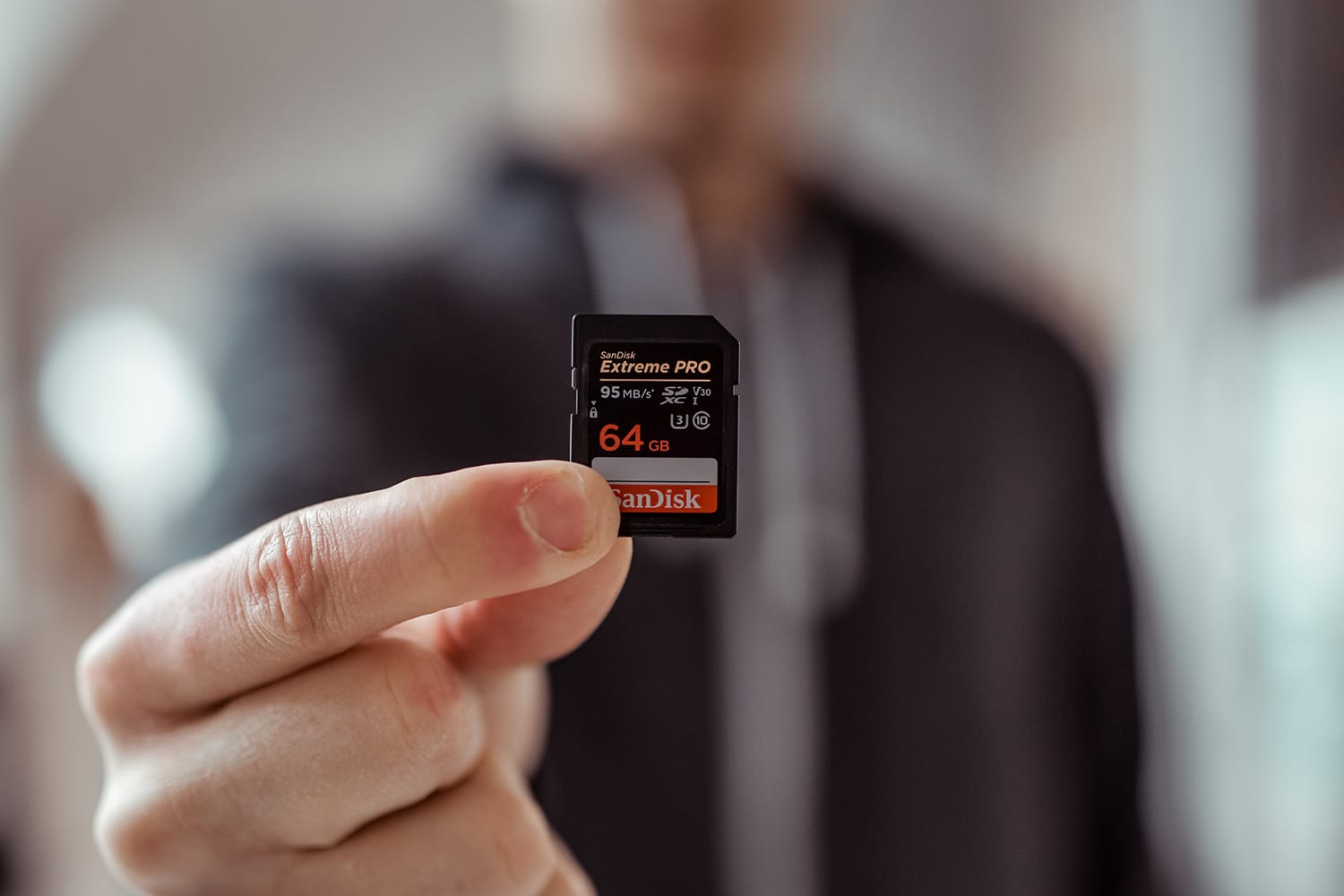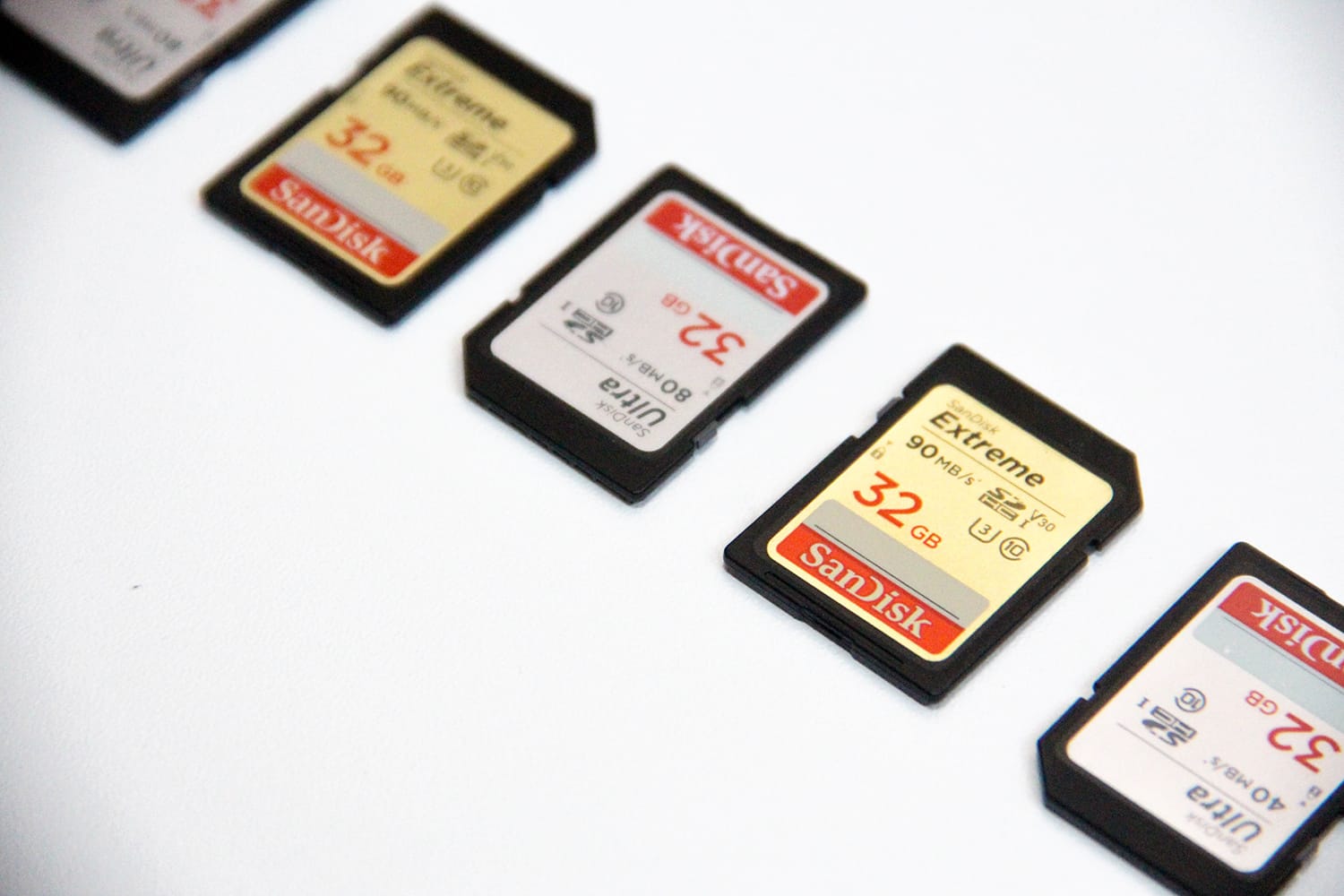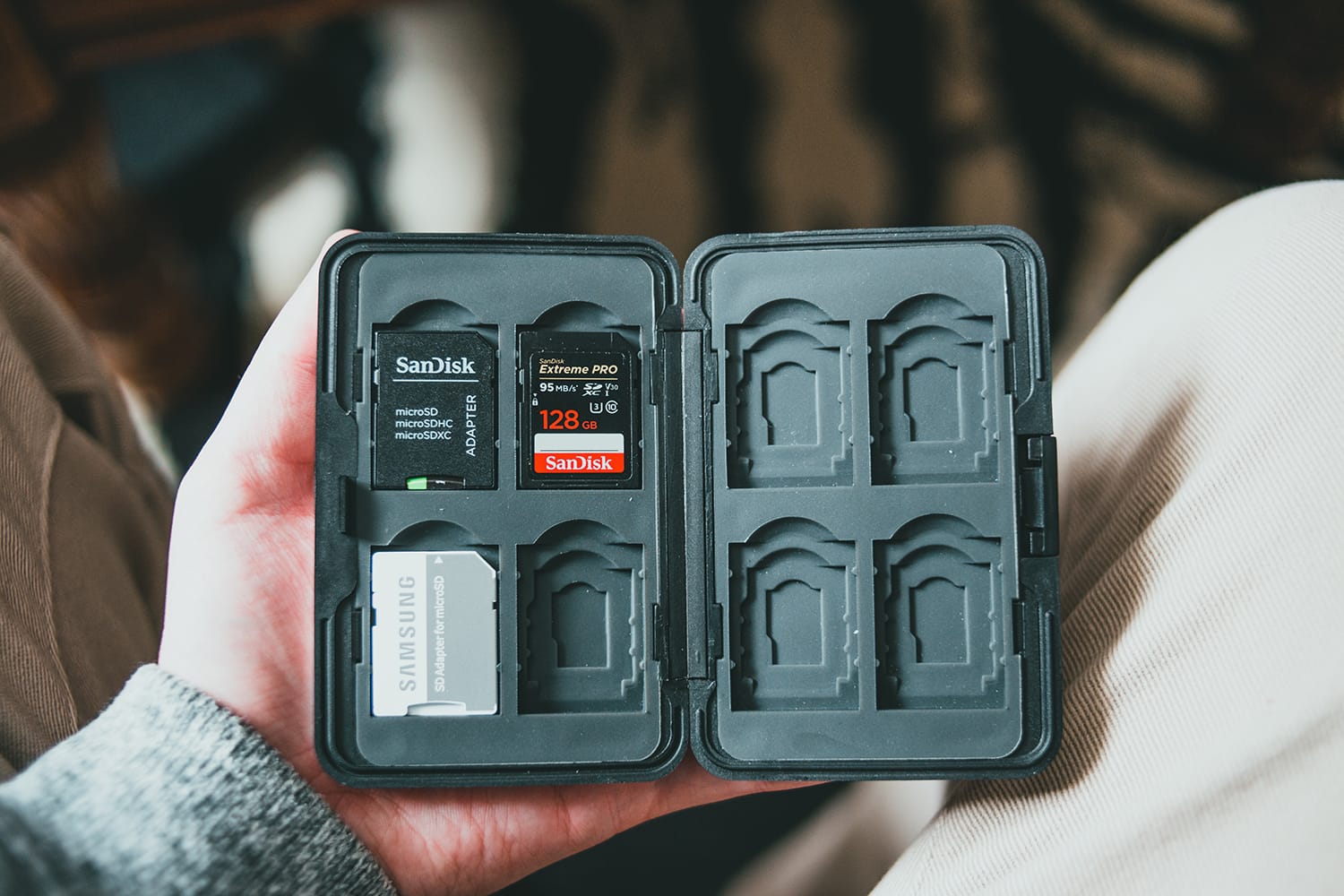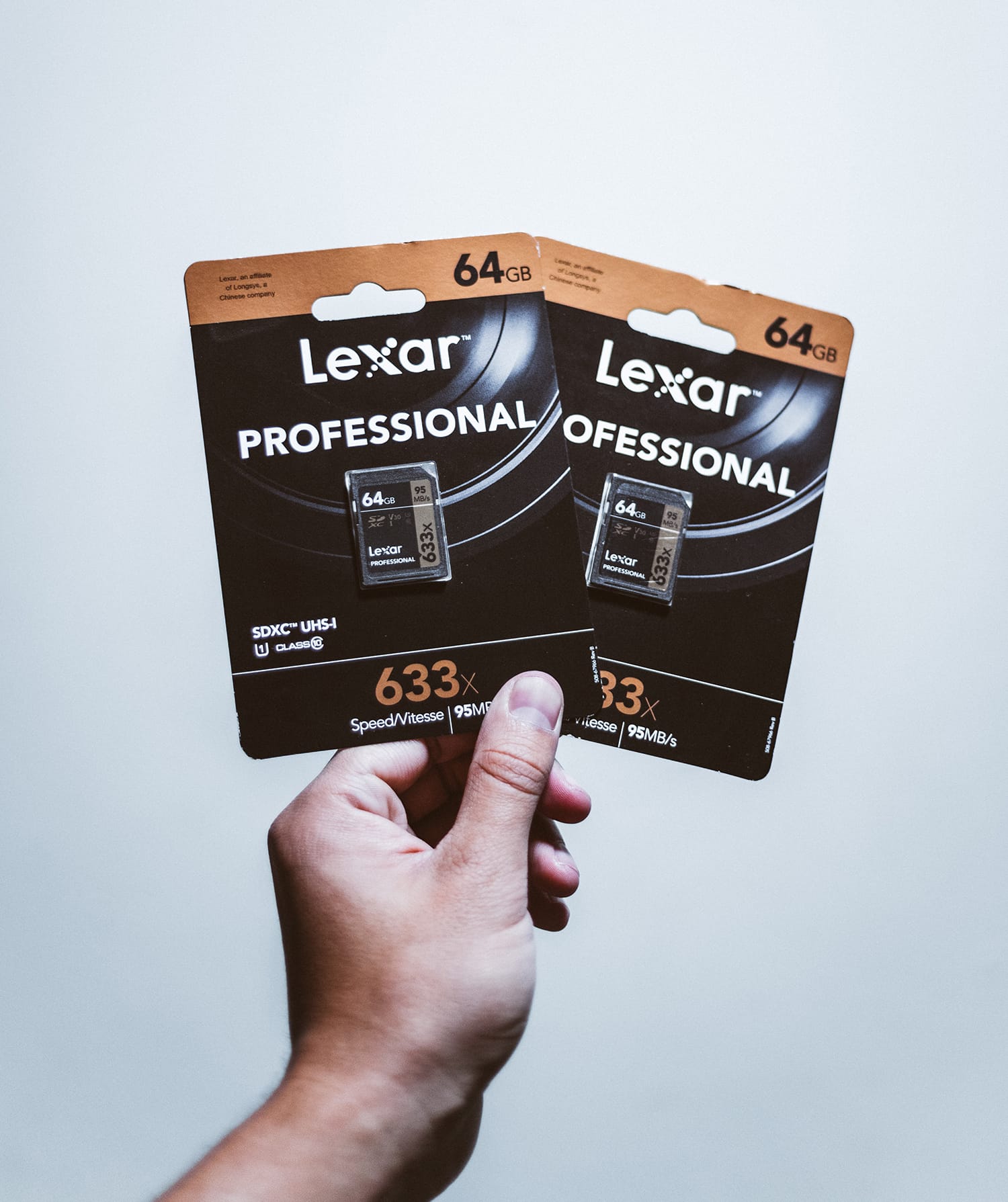Tips for Choosing the Right Memory Card for Your Camera
One of the most heartbreaking things that can happen to a photographer is losing photos. Additionally, nothing can be more frustrating to read the warning sign saying that you’re low on memory when you’re about to take a picture.
To keep yourself from both of these situations, it’s critical to have one or more spare memory cards. If you’re planning to do the same, then you’ve come to the right spot.

Choosing a memory card can be a challenging task because of the abundance of available products on the market. There are hundreds of brands offering numerous memory cards, and each claims to be the best provider. You’ll need to strike a perfect balance between the price and the quality of a card before making your final decision.
Consider reading this guide carefully that contains the best tips for choosing the right memory card and some suitable options. So let’s get started.

How to Choose the Right Memory Card?
A memory card is a small removable flash storage device that allows you to keep any data type, including audio and video files, documents, and, most importantly, photos. Almost all the modern DSLR and mirrorless cameras come with one or more dedicated memory card slot(s). To utilize that, you’ll need to insert the memory card that your camera supports. Consider keeping the following tips in mind while buying a new memory card.
The Type of Memory Card
Memory cards come in different types, such as CF cards, SD cards, Micro SD cards, M2, and more. However, only the following types of memory cards are used primarily when it comes to cameras and photography.
1. SD Cards
It’s the most commonly used type of memory card by photographers because pretty much all digital cameras support it. It’s the bigger form of the aforementioned micro SD cards. This type was initially launched back in 1999, and it only had 2 GB of maximum capacity at that time. However, now you can easily find SD cards with a staggering 1 TB of storage.
2. Wi-Fi Card
It’s a modern memory card type that comes with an built-in Wi-Fi feature. The biggest benefit of this card is that it allows you to transfer your images to your cloud storage, computer, or even smartphone without using any cable. This way, you won’t need any spare card to replace if the primary one is filled. All you need to do is wait for some time to transfer your photos to the cloud and start capturing pictures by emptying the memory card.
3. CF (Compact Flash) Card
The compact flash card is one of the oldest memory cards introduced way back in 1994. These cards come with high capacity and transfer speed, and that’s why many manufacturers equip their cameras with them. You can also find cameras that come with both CF card and SD card slots.
4. Other Uncommon Types of Memory Cards
There are some other types of memory cards as well. For example, the Extreme Digital or XD picture card. It was made back in 2002 by Fuji and Olympus. Because of its very small and compact size, you’ll need to use an adaptor to use this memory card. Moreover, it only comes with the storage of 512 MB.
Multimedia or MMC cards can be used with the cameras that support SD cards. You can also use these types of memory cards in your mobile phone and MP3 players. It’s important to note that MMC cards don’t have any protection switch, which means your data can be wiped off automatically.
The Memory Stick is yet another type of storage device that Sony primarily manufactured for CyberShot. However, it’s still used today by many people. The storage capacity of the memory stick is only 256 MB.

The Memory Card’s Capacity
Checking the capacity of the memory card you are planning to buy is also critical. You don’t want to end up having a memory card with a low capacity that doesn’t meet your needs. You’ll need to choose the capacity, depending upon the number of shots you take in a single event.
Many photographers prefer memory cards with 64 GB of capacity that can store up to 1500 to 2000 photos in RAW format. We recommend you opt for a memory card with at least 64 GB of capacity if you usually shoot in RAW format. On the other hand, if JPEG is your preference, then you can buy a memory card with 16 or 32 GB as well. Also, consider if you shoot video, you might need a larger capacity.
Personally, I’ll always prefer to bring multiple 32GB or 64GB cards and place two cards in a dual card-slot camera and have backups and spares in my camera bag. I find it’s safer to split images across multiple cards rather than have a single point of failure by having just one very large card containing all the photos from a shoot.

Speed
Speed is perhaps the most critical factor that can make or break your experience of storing images in your memory card. You don’t want to wait for hours and hours to transfer your photos from your card to your computer. All SD cards come with a limited speed that refers to both reading and writing.
The reading speed refers to the amount of time that a card takes to read the photos from its memory while transferring or copying, and the writing speed means the amount of time a card takes to store pictures or other data in its memory. It means that the writing speed comes into play when you shoot, and the reading speed plays its part while transferring the photos from the memory card to your computer.
Speed in SD cards
Usually, the memory card manufacturers mention the maximum speed on their cards. It’s important to note that the reading speed is typically two times the writing speed in SD cards. The SD Association has divided SD cards into multiple classes, and each comes with its maximum reading and writing speed. Consider reading and understanding the following table to choose the SD card that meets your needs the best.
| Memory Card Class | Minimum Speed |
|---|---|
| 10 | 10 MB per second |
| 8 | 8 MB per second |
| 6 | 6 MB per second |
| 4 | 4 MB per second |
| 2 | 2 MB per second |
It’s important to note that the SD Association has also established a new class known as UHS in 2009. It happened after the introduction of new types of SD cards known as SDXC and SDHC. This new type uses new technology to read and write data, and it also works with old non-UHS memory cards with better speed.
However, the same is not true the other way around, which means that you can use UHS memory cards in non-UHS card slots, but you won’t get the improved read and write speed. Here are the two different types of UHS memory cards, along with their transfer speed.
| UHS Memory Card Class | Minimum Speed |
|---|---|
| 3 | 30 MB per second |
| 1 | 10 MB per second |
There are also UHS-II and UHS-III classes. The UHS-II supports SDUC, SDXC, and SDHC cards and offers 156 MB per second of minimum speed. On the other hand, UHS-III supports the same types of cards but provides a staggering 312 MB per second of minimum speed.
It’s important to note that the higher the class of a memory card, the higher the speed, and it will also have a higher cost. So, you’ll need to choose the one that suits your budget and needs the best.
Speed In Compact Flash Cards
The speed in compact flash-cards is usually denoted by “X times,” where X stands for “150 KB per second”. So if you are buying a CF memory card that comes with 600X, then it will have a transfer speed of 90 MB per second. You can calculate it yourself by using the following formula.
600X = (600) x (150 KB per second) = 90000 KB per second = 90000/1000 MB per second
Speed = 90 MB per second
The latest CF memory cards are also equipped with UDMA 7, allowing your camera to get ready quickly for the next shot.
Price
Price is one of those factors that you need to consider while buying anything regardless of its use and type. Typically, CF cards are more expensive than SD cards because they offer better speed and UDMA 7 technology. Moreover, it’s a general rule that the higher the speed, the more expensive the memory card will be. So if the capacity is your biggest concern, consider choosing a card with more capacity by sacrificing the speed.
Top Memory Cards to Choose
There are tons of memory cards available in the market, and we have selected some of the best options that you can choose.
SanDisk Extreme PRO SDXC UHS-I: Best for Power Users
This memory card is the best option for all power users. SanDisk is arguably the best memory card manufacturer out there and offers a range of memory cards. You can buy the Extreme PRO SDXC UHS-I with different capacity options that range from 64 Gb to 1 TB. The speed class of this SDXC card is UHS 3, which means 30 MB per second of minimum speed. You can use this memory card if you usually perform rapid-fire shooting in both RAW and JPEG formats. The transfer speed of this memory card is also impressive, which is up to 170 MB per second. You can opt for the 512 GB or 1 Tb variant to shoot 4K videos.
Features
- Cart Type: SDXC
- Read Speed: Up to 90 MB per second
- Write Speed: Up to 170 MB per second
- Capacity: Up to 1 TB
- Best for power users
- Warranty: Lifetime
Pros
- Extreme Performance
- Range of capacity options
- Lifetime warranty
Cons
- A little expensive
Lexar Professional Class 10 UHS-II 2000X: All Types of Photographers
Lexar is also one of the most popular memory card manufacturers out there that offer top-quality products. The UHS-II 2000X comes with a staggering 260 MB per second of write speed and 300 MB per second of reading speed. So whether you want to capture high-resolution RAW photos, 4K videos, or Full HD videos, this card will suit you the best. However, the biggest downside of this card is that the maximum capacity is only 128 GB.
Features
- Cart Type: SDXC and/or SDHC
- Read Speed: Up to 300 MB per second
- Write Speed: Up to 260 MB per second
- Capacity: Up to 128 GB
- Best for all types of photographers
- Warranty: Lifetime
Pros
- Extremely high read and write speed
- Lifetime warranty
Cons
- Expensive option if you’re on a budget
Transcend SDXC UHS-II U3: Best for Pro Photographers
If you are a seasonal photographer looking for a high-performance memory card for your camera, then the SDXC UHS-II U3 can be your best choice. This memory card can easily withstand the sequential bursts of images with the highest resolutions. You can also shoot 4K videos and high-resolution photos in RAW format. SDXC UHS-II U3 offers up to 285 MB per second reading speed and 180 MB per second of writing speed. You can insert this memory card into any UHS-II compatible camera.
Features
- Cart Type: SDXC
- Read Speed: Up to 285 MB per second
- Write Speed: Up to 180 MB per second
- Capacity: Up to 64 GB
- Best for: Pro Photographers
- Warranty: Five years of the limited warranty
Pros
- Fast data reading and writing speeds
- Great for 4K recording and RAW shooting
Cons
- Low maximum capacity
- Some faster options are also available
Samsung PRO Endurance: Action Cameras
As the name implies, Samsung PRO Endurance is specially designed to withstand hard environments, and it lasts a lot longer than most memory cards. That’s why it also costs more than most available options. The reading speed of this memory card is 100 MB per second, and the writing speed is 30 MB per second.
Features
- Cart Type: Micro SD (the SD adapter is also available)
- Read Speed: Up to 285 MB per second
- Write Speed: Up to 285 MB per second
- Capacity: Up to 128 GB
- Best for Action Cameras
- Warranty: Five years of the limited warranty
Pros
- Long-Lasting
- Can withstand harsh environments
- Great for action
Cons
- Expensive
Final Words
These are only the fundamental concepts and basic facts regarding memory cards. We hope this guide will help you in selecting the best one for your camera. Feel free to let us know about your thoughts and experiences with other types or brands of memory cards on Facebook or Twitter.
